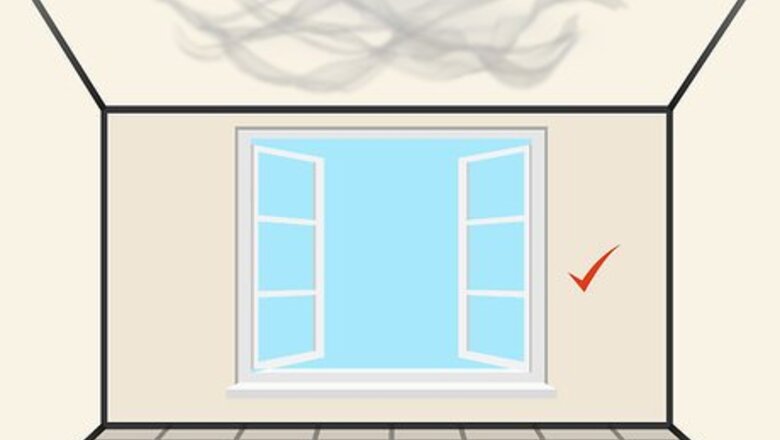
views
Preparing the Area
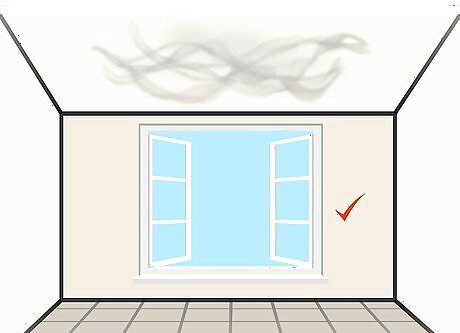
Create a source of ventilation. When dealing with caustic cleaning materials, you make sure you have good airflow in the room. You can accomplish this in many ways, but the most basic way to create ventilation is to open a window and turn on a fan. If the room in question does not have a window, be sure to leave the door open and have a fan on its highest setting.

Place a drop cloth beneath the cleaning area. Soot and smoke stains can fall off of the ceiling and floor, so laying down a dropcloth will minimize cleanup. This is particularly true of walls and ceilings containing smoke damage and soot, as soot will crumble and peel away. A dropcloth can also be used to catch dust and any stray droplets of cleaning solution that might damage the floor. A sturdy canvas drop cloth is usually best.
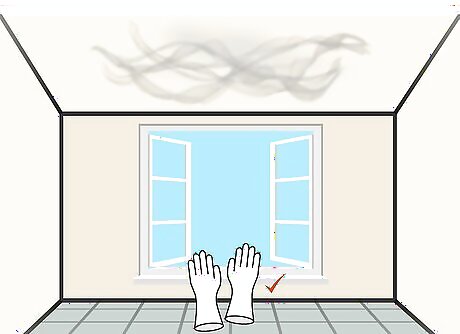
Don durable cleaning gloves. Some of the cleaning materials are caustic and should not come into direct contact with your skin. Select a pair of thick cleaning gloves, avoiding thin latex medical gloves, as these can easily puncture and may actually melt or burn with certain cleaning solutions. Most markets have cleaning gloves thick enough to get the job done. You can also check the cleaning section of your local hardware store.
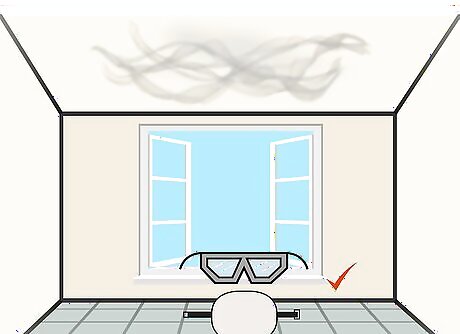
Wear protective face gear. Because debris can fall from the ceiling, you should have your eyes covered by protective glasses. Depending on the amount of ventilation the room has, you can choose between a simple mask for your mouth and nose, or a heavy-duty air filter for your mouth and nose. You may also want to wear a hat of some kind to prevent items from falling into your hair and eyebrows, but it is not a safety concern.

Grab a stepladder. Use a sturdy stepladder to reach tall walls and ceilings, avoiding flimsy step stools or ladders intended for outdoor use. This will help you maintain steady balance, which will be key in scrubbing everything away.
Cleaning up Soot

Vacuum the area. Before you begin cleaning, vacuum the wall and ceiling you intend to clean. Dust can attach itself to soot and the greasy byproduct of some smoke staining. Vacuuming the dust away will cut down on your cleaning time and the amount of rags and cleaning solution you'll need. Vacuuming is especially important for popcorn ceilings and other uneven textures, as water and a rag will not be likely to get into all of the crevices.

Wipe away dust with a dry towel or sponge. After you've vacuumed, remove any lingering dust with a dry towel or a sponge. There are sponges created specifically for removing soot and smoke staining. These can be found at most hardware stores.

Spray the area with a grease cleaner. If the area is extremely small, you can use a degreasing dish soap to begin cleaning. On a larger area, you'll need more strength. A solution such as TSP (trisodium phosphate) can cut through grease, soot, and staining quickly, making clean-up a breeze. TSP should never touch your bare skin, so be sure to wear gloves. Also be sure to use a cleaning rag or sponge you do not mind ruining, as TSP can cause bleaching and may wear down material. For a gentler alternative, use 1 cup (240 mL) of ammonia diluted in a bucket of hot water.
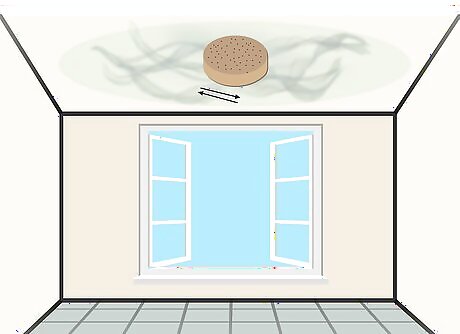
Wipe down the damaged area with a clean cloth or sponge. Once you've sprayed the area, begin wiping away the solution and soot with firm strokes. If there is a lot of soot, you may need to use several rags or sponges, and may want to stay close to running water to rinse away dirt and debris.

Continue cleaning with a degreaser until the soot is gone. A single pass with a degreasing agent may not do the trick, especially on large, heavily-stained areas. Continue passing over the area with a degreaser until all remnants of the staining and soot have been removed. If the area has sustained heavy damage, you may need to increase the cleaning agent in your solution. To do so, increase in small increments.
Removing Cigarette Smoke Staining

Scrape off any beading that has occurred. Cigarette smoke stains can cause yellow beading on ceilings and walls. Once the beading has hardened, it must be scraped off before the area can be cleaned properly. You can use a butter knife or a putty knife to scrape away these beads. If the beading is severe, scraping it away may cause some of the drywall to come away, as well. If this is the case, you may need to patch the ceilings before you continue.
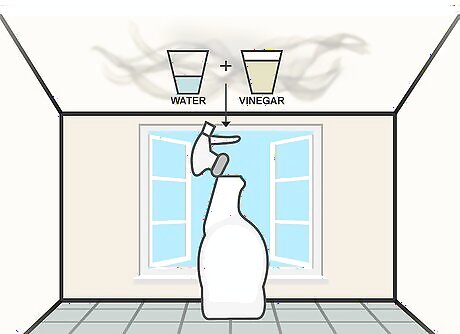
Mix water with either vinegar or a TSP solution. Once the beading has been removed, stir your vinegar or TSP solution, making enough to cover the area several times. For a small area, like a bathroom, a 1-gallon (3.8-liter) bucket should be enough. Follow the instructions listed on the cleaning agent's container to get the optimum results.

Apply vinegar or TSP liberally to the ceiling. Dip your rag or sponge into the solution and gently wring out any excess. This will keep the solution from dripping onto your face. With your hands gloved, apply the cleaning solution to the area with beading. Dip and re-wring your cloth or sponge when one side has become completely soiled.

Dry each section as you go. After you've finished each section, dry it with a clean towel or washcloth. This will help you get a better idea of whether or not you need to go back over each spot. When the solution is wet, the beading may appear to have been removed, but may reappear after the ceiling has dried. If possible, use a microfiber cloth to prevent pilling or snagging on textured ceilings.




















Comments
0 comment